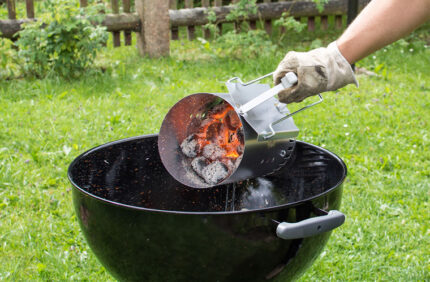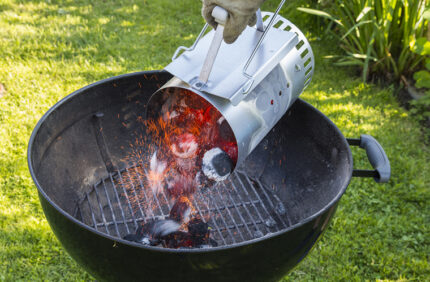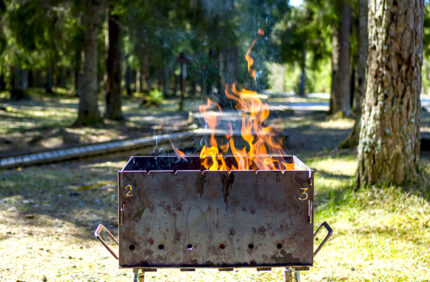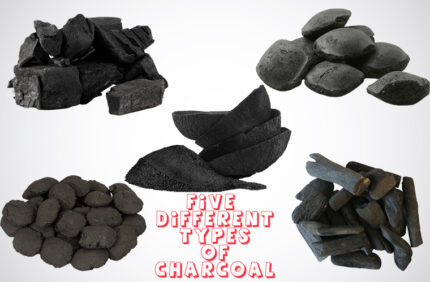At a glance, the New York strip and ribeye look quite similar. Both steak cuts have marbling, firm textures, delicious tastes, and they are widely available. However, there are a few differences between the NY Strip vs. Ribeye.
To help you get the right steak cut (especially since they can go by different names), we’ll explain how the ribeye and ny strip are different in this article. You’ll also get the best way to cook both premium steaks, which cut is for who, and our verdict on the better option.
What cut is the NY Strip?
The NY Strip is a high-end beef cut. The first dishes from the cut was made in New York, which is how its name became associated with the American state. Sometimes, the bone could be attached. However, this steak cut is often boneless.
The NY Strip is sold as a stand-alone beef cut.
Where is it located?
The NY Strip comes from the short loin sub-primal just behind the ribs of a steer. This area is also where prime steaks like the T-bone, Gilet Mignon, and Porterhouse are also cut from.
The main muscle of a cow that makes up a NY strip is the Longissimus Dorsi.
Nutritional content of the NY Strip
In a three-ounce serving of this steak cut, BBQ-lovers get:
⇒ 25g of protein
⇒ 160 calories
⇒ 1.6mg of iron
⇒ 4.5 mg of zinc
⇒ 2.3 g of saturated fat
⇒ 3 g of monounsaturated fat
The NY strip also contains Vitamin B6, Vitamin B12, phosphorus, niacin, and other trace elements. Among all other loin cuts, the NY strip delivers the least fat.
Portion per size: How much NY Strip for one person?
Generally, a NY Strip weighs between 12 to 14 ounces, but you’ll also find small portions that come in at 6 to 10 ounces.
For most grillers, one steak should be enough to satisfy their appetite for delicious steak.
The New York Strip is flavorful, especially when cooked properly. Still, the strip steak has a fat cap on its edge that makes the flavor fuller. Butchers cut it one-inch thick to get more marbling and prevent it from getting dry.
Other common names
Depending on where you live, the New York Strip may go by other names. Here are the common aliases:
⇒ Kansas City Strip steak
⇒ Contre filet
⇒ Kansas City steak
⇒ Strip Loin steak
⇒ Ambassador steak
⇒ Hotel steak
⇒ Sirloin steak
⇒ Club sirloin steak
⇒ Shell steak
How to prepare and cook the New York Strip
NY Strip steaks are usually well-trimmed and just about ready to cook when you get them out of a butcher’s outlet. Once out of the fridge, leave them for half an hour to thaw at room temperate. Next, pat the cut with a paper towel and then liberally season both sides with salt or pepper.
There are two methods to cook the NY Strip:
1. The high and dry method:
This involves heating your grill to a high temperature (about 900°F) and then placing the cuts directly on your grill grates. After a few minutes, flip the cuts to ensure they don’t get burned. You can use two temperature probes with the grill: one to measure the grill’s ambient temperature and the other to measure the cut’s doneness.
2. Pan fry method:
This method requires a smoking hot frying-pan (Alternatively, you can use grill pans) to cook your NY Strip steak cuts. You could do this on your burner or with your oven.
Put your meat cuts on the pan, and then wait until they get to 5°F from the ideal temperature. Since the temperature will keep on rising, remove your NY Strip steak and allow it to rest for a minute or two.
Finally, collect the juices from the cooking process and heat them again in your pan for a few minutes before pouring them on your NY strip.
When your NY Strip steak is ready, you can make a signature recipe or sauce to make it tastier.
What cut is the ribeye?
The ribeye is a prime beef steak. The cut comes from the best portion of the rib, or the ‘eye,’ which is how it got its name.
Where is it located?
The ribeye is a cut from the upper rib section of a steer, just around the neck. This section contains six to twelve ribs. While most Ribeye steaks are made primarily of the Longissimus Dorsi muscle, others can contain the Complexus and Spinalis muscles.
The Nutritional content of the ribeye
When the bone is left in, this meat cut is called a rib steak. It is known as a ribeye when boneless. In either case, BBQ-lovers get the following in a three-ounce serving of the cut:
⇒ 23g of protein
⇒ 190 calories
⇒ 2.2 mg of iron
⇒ 5 mg of zinc
⇒ 4 g of saturated fat
⇒ 5g of monounsaturated fat
The ribeye also contains Vitamin B6, Vitamin B12, selenium, niacin, and phosphorus.
Portion per size: How much ribeye for one person?
The quantity of steak you need depends on your appetite and what you intend to eat it with. But generally, a ribeye weighs 9 to 12 ounces.
Considering that beef steaks reduce by 25% after cooking, one steak with a side should be enough to satisfy most BBQ lovers’ hunger.
The ribeye is marbled and tender. When cooked properly, it will literally melt in your mouth and excite your taste buds.
Other common names
You can find a ribeye under other names like:
⇒ Scotch fillet
⇒ The cowboy cut (when the bone is left in)
⇒ Spencer steak (boneless)
⇒ Entrecôte
⇒ Delmonico steak
⇒ Tomahawk steak
How to prepare and cook a ribeye
If you get a ribeye from an experienced butcher, it will be cut to perfection. Tap lightly with a paper towel before seasoning both sides with salt. You can add pepper or other seasons after cooking your ribeye. Doing that before can make the crust bitter.
A ribeye can be cooked in two major ways:
1. Two-zone grilling:
This method involves cooking your ribeye under a two-zone fire. To do this, set one burner high and the other on medium when using a gas grill. With a charcoal grill, keep more charcoal chunks on one side.
Depending on how crunchy you want your meat cut, first, sear the ribeye on the hot section and finish up the cooking process on the medium-heat side. Since there are two sections, using only a meat temperature should help you keep tabs on your ribeye.
2. Reverse sear:
Using this method, first preheat your grill or oven to approximately 275°F. Then, throw in your ribeye. It shouldn’t get past 90-95°F.
The reverse sear method helps to lock in the juices from the ribeye.
Most grillers cook their ribeye with a knob of butter and eat them with vegetables or a sauce.
Differences between NY Strip and Ribeye
Here’s how you can tell a Ribeye vs. NY strip:
1. Tenderness:
When it comes to the tenderness, the ribeye gets the crown. It’s more succulent than the NY strip.
2. Appearance:
Another way to tell the difference between the NY strip vs. ribeye is to look closely at both beef cuts. They are both from the back area of the back. However, a ribeye will have an outer ring of meat surrounded by a band of fat. It is also well-marbled.
On the other hand, the New York strip is less marbled than the ribeye. A more convincing way to know a beef cut is a New York strip because it will have a band of fat along only one side. There won’t be any meat outside this fat band.
Also, you’ll find a cartilage layer on the New York Strip.
You may decide to cut out the fat band on a NY strip since you can’t really eat it. However, this can lead to an unevenly shaped beef cut.
3. Ease of cooking and grilling:
As we’ve established, the ribeye contains more white fat flecks than the NY Strip. The marbling and drippings can cause flare-ups while cooking or grilling the beef cut.
For many grillers, this can make grilling or cooking the ribeye difficult. Nevertheless, since the NY Strip contains less fat, it tends to dry out quickly.
4. Cost: New York Strip versus Rib eye:
In most online shops and retail outlets, you’ll find that the ribeye is slightly more expensive than a NY Strip. The ribeye commands a price tag of $20 to $40 per pound, and the ribeye can go for $23 to $50 per pound. However, the meat quality, steak thickness, and where you get a cut from can influence its price.
For example, outlets in states where the steak consumption is high (like Florida) can sell a NY strip for a higher price than the ribeye.
Also, whether the cut is bone-in or boneless can affect how much it goes for. For example, some butchers and online shops sell a boneless NY for a higher price than a boneless ribeye.
Buying Guide: New York Strip vs Ribeye
If it comes down to picking only one meat cut, what should you do? Here are some useful tips:
When should you pick a ribeye?
If you crave a highly flavorful steak with a smooth texture, the ribeye is a great option for you. It’s also the better option if you have sensitive teeth and shouldn’t be chewing tough meat cuts.
When should you pick a NY Strip steak?
Pick a NY Strip if you want a lean, delicious steak. Also, consider this meat option if you prefer your cut to be chewy. It’s a great option when you’re trying to cut down on your fat content.
Where to buy a ribeye and NY Strip steak?
Since they’re incredibly popular, you can get a ribeye and NY Stripe steak from butcher’s stores or local grocers around you. The cuts are also sold on online outlets as frozen beef steaks or cooked cuts.
For a New York Strip steak, check out cuts that have even widths across their grain. Uneven New York Strip cuts or those with wavy shapes don’t hold in as many juices as the even ones.
On the other hand, look for a prime-grade ribeye that’s at least one-inch thick.
Bottom Line
Although they are similar, you shouldn’t mix up these cuts anymore more. Even if they go by their nicknames or aliases, there are clear-cut differences between NY Strip vs. ribeye that you should spot just by looking at the two steaks.
Whichever beef cut you decide to get, ensure you season, cook, slice and add your favorite sides to your ribeye or NY Strip cuts.
FAQs
Which is better: New York Strip vs. Ribeye?
Ultimately, the NY Strip isn’t better than the ribeye and vice-versa. You need to decide what is important to you (using the differences we’ve stated above) before picking one beef cut over the other.
Is a ribeye or NY Strip a better cut for a BBQ?
No, the ribeye or NY Strip isn’t a better cut. Their muscle groups are similar, so their texture will feel about the same to you.
Are NY Strips and ribeye healthy?
Due to its lower fat content, the NY Strip is considered the healthier option between the steak cuts. However, the ribeye makes up for this by being containing more calories per ounce and being more delicious than the NY Strip.
How long should you cook a NY Strip or ribeye for?
Generally, it should take you 10 to 25 minutes to cook a NY Strip or ribeye. However, the cooking time depends on several factors.
For example, your grill’s temperature, the char-level you’re going for, and your grill’s heat distribution can all influence your cooking time.







